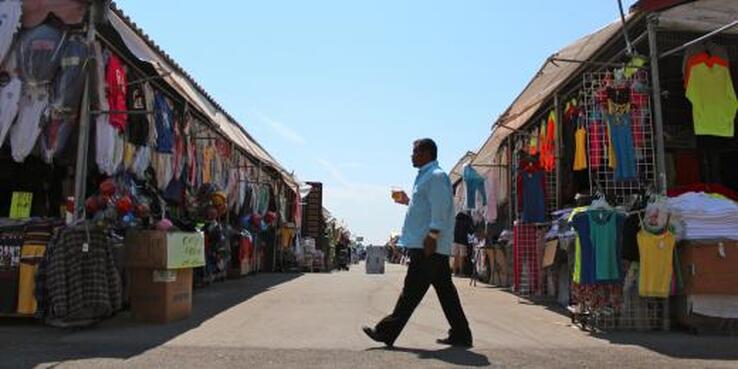The San Jose Flea Market hosts one of the country’s most extensive collections of items for sale, building upon San Jose’s legacy as a city of many people and cultures. The flea market opened in 1960 with 20 vendors brought together by George Bumb, a man with a vision to sell usable items that he saw being sent to landfills. Since then it has grown to become the largest continuous flea market in the nation, welcoming 4 million visitors a year. The 120-acre site carries 6,000 vendors each week and is staffed by 350 part-time employees. On a recent walking tour of the market, SPUR members discovered a nearly complete city unto itself.
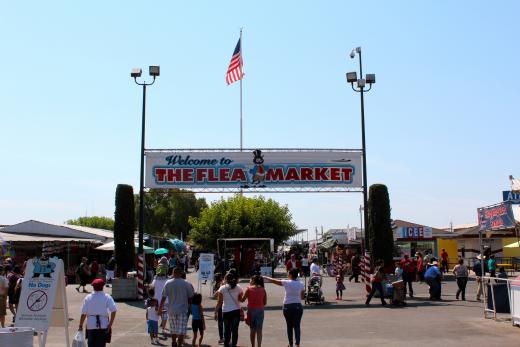
The main entrance to the flea market.
Entering the market, we found ourselves in a mini-citadel, complete with a street grid, street signs, street names and maps offering solace to the lost explorer. As we ventured further into this realm of built structures, tents and open-air vendors, we were surprised by the variety and extent of products for sale. Like in any functioning urban center, we were walking distance from a variety of everyday items, from personal hygiene to clothing. But the market also offers unique finds, such as furniture, quinceañera dresses, pet fish and piñata candy. We learned that in the 1990s, the flea market sold the most beer west of the Mississippi and the second most nationwide.
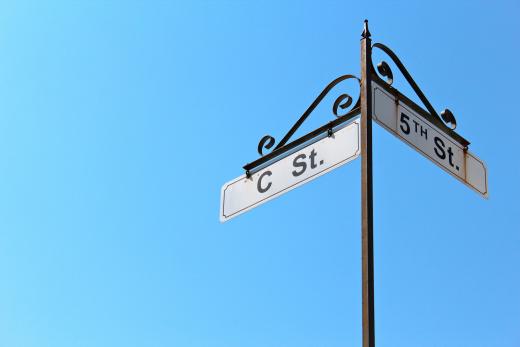 Street signs direct shoppers through the flea market's 120 acres.
Street signs direct shoppers through the flea market's 120 acres.
Access to fresh food is a major health benefit for any city. One of the most spectacular sections in this market is the produce aisle. For starters, it’s a quarter of a mile long. It has a growing section of certified organic produce, at surprisingly affordable prices. From typical vegetables like tomatoes to Mexican spices and rare Asian produce, the produce selection at the flea market is truly remarkable.
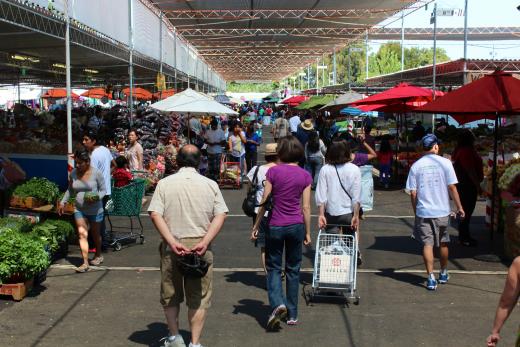 The produce aisle.
The produce aisle.
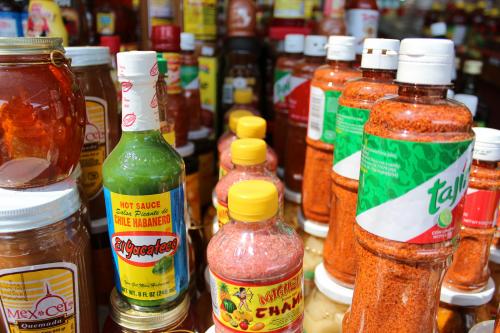
A small segment of the market's spice selection.
As in most city centers, entertainment opportunities are just a short walk away. A central stage hosts live performances by local artists. Food stalls satisfy cravings for everything from fresh-cut fruit to churros to full meals.
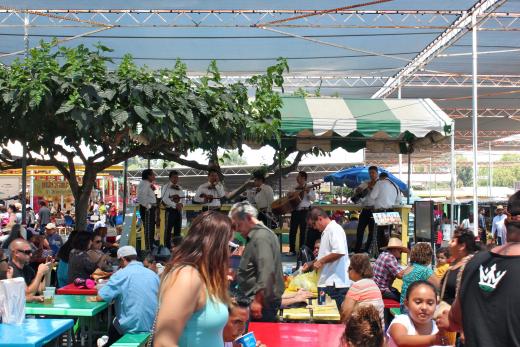
A mariachi band performs on the central stage.
Another benefit of vibrant urban centers is the ease of access to entrepreneurship opportunities. To become a vendor in the flea market, sellers only need to bring a valid ID and pay a small rental fee for the spot. As long as they’re not selling more than twice a year, they don’t need a business permit.
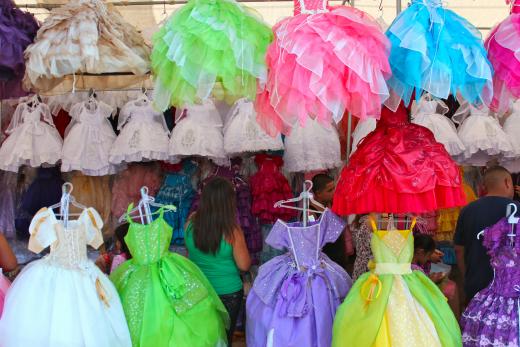
Party dresses for sale.
As in most cities, the only constant is change. The arrival of the Berryessa BART station adjacent to the flea market will bring with it a plan for housing development in the surrounding area, and it’s unknown what the impact will be on the market. The current intent is to either accommodate or relocate the market as the planned development moves forward. Urban planning is a complex balance. Cities need to grow, and placing housing near transit is an important step in reducing our reliance on cars. But good urbanism also recognizes the value of the existing environment and retains the unique features that give a city its character.
